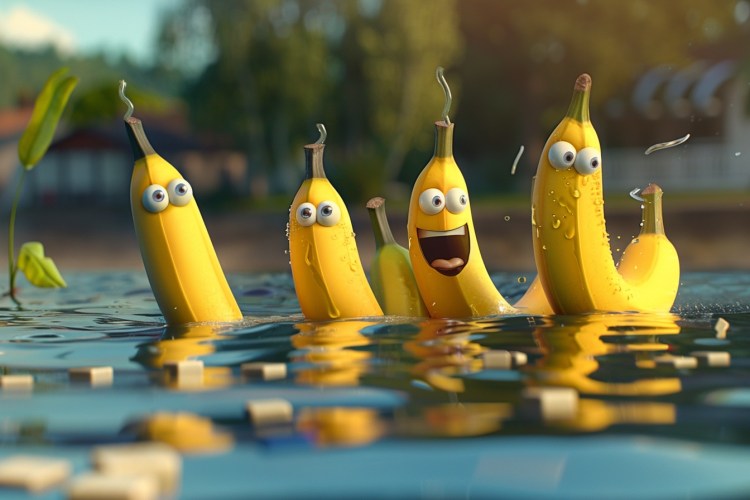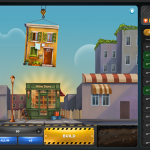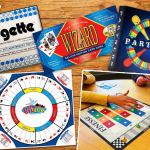It’s summer and you’re hunkered down at the lake with the kids and someone is looking for a game you can play after dinner. But the only game to be found in the old cabin is an aging Scrabble board and a Crown Royal bag of tiles.
Can You Play Bananagrams with Scrabble Tiles?

Can You Play Bananagrams with Scrabble Tiles?
It’s summer and you’re hunkered down at the lake with the kids and someone is looking for a game you can play after dinner. But the only game to be found in the old cabin is an aging Scrabble board and a Crown Royal bag of tiles. Scrabble isn’t really the rousing 4 person game you’re needing right now but did you know you can play BananaGrams with Scrabble tiles?
Yes, you can play Bananagrams with Scrabble Tiles!
First, What is Bananagrams?
Bananagrams is a fast-paced word game that is similar to Scrabble but does not require a board. It is designed for 1-8 players and emphasizes speed, flexibility, and creativity in forming words. The game is packaged in a small, portable banana-shaped pouch, making it easy to take on the go.
Objective:
The goal of the game is to be the first player to use up all their letter tiles to create a valid crossword grid at the end of the game.
Setup:
All tiles are placed face down in the center of the table. This pile of tiles is called the “bunch.”
If you have a banana bag full of tiles, each player draws a certain number of tiles to start. See below if you’re using Scrabble tiles:
For 2-4 players: Draw 21 tiles each.
For 5-6 players: Draw 15 tiles each.
For 7-8 players: Draw 11 tiles each.
Gameplay:
One player says “Split!” to start the game. All players turn their tiles face up and begin arranging them into interconnected words, forming their own crossword-style grid. This is done in front of you, not in the middle of the table.
Players can rearrange their grids as often as they like.
When a player uses all their tiles, they say “Peel!” and everyone draws one new tile from the bunch.
At any time, a player has the option to say “Dump!” and return one tile to the bunch, drawing three new tiles as a penalty. This is usually when they are stuck and can’t play a tile.
Winning:
When the BUNCH is depleted to fewer tiles than number of players, the first person to use ALL their letters in a connected word grid and call out “BANANAS!” wins that hand and is declared TOP BANANA!
Other players may now inspect the winning grid. If it contains a misspelled word, proper noun, abbreviation or other unacceptable word, the other players call out “ROTTEN BANANA!” and that player is out of the game. The ROTTEN BANANA’s letters are returned to the BUNCH facedown. Play resumes for the other players until one of them calls out “BANANAS!”
Key Features:
Speed: Unlike Scrabble, there is no waiting for turns. All players play simultaneously, which keeps the game fast-paced and engaging.
Flexibility: Players can rearrange their grids at any time, allowing for dynamic gameplay and creative word formation.
Portability: The banana-shaped pouch is easy to carry, making Bananagrams a great game for travel or casual play anywhere.
Playing with Scrabble Tiles
The game of Bananagrams uses 144 tiles and a Scrabble game has only 100 tiles. As a result, we need to adjust a few things, and the game itself will be a bit shorter.
Each player draws fewer tiles to start:
For 2-4 players: Draw 15 tiles each.
For 5-6 players: Draw 10 tiles each.
For 7-8 players: Draw 7 tiles each.
The game continues until there are no tiles left in the bunch.
With fewer tiles, the game might end more quickly and players will have fewer opportunities to rearrange their grids.
The starting number of tiles is reduced to accommodate the lower total number of tiles available.
Players should be aware that the tile distribution is different, which might make forming certain words more challenging.
Tips for playing Bananagrams with Scrabble Tiles
Rearrange Frequently: Don’t hesitate to rearrange your grid to accommodate new tiles. Flexibility and creativity are key in forming new words.
Use Common Letters First: Prioritize using common letters like vowels (A, E, I, O, U) and frequently occurring consonants (R, S, T, L, N) to form shorter, common words.
Build Around Short Words: Start with short, simple words and expand them. This strategy makes it easier to rearrange your grid as you draw more tiles.
Keep the Grid Compact: Try to keep your grid as compact as possible to make it easier to add new words and rearrange existing ones.
Manage Difficult Letters: If you have difficult letters like Q, X, Z, or J, try to place them early in the game. Form words like “AX,” “OX,” “QUIZ,” or “JET” to get these tiles out of the way.
Stay Calm During “Peel” and “Dump”: When a player calls “Peel,” draw a new tile quickly but don’t panic. Take a moment to see how the new tile can fit into your grid. Use the “Dump” option strategically. If you have a tile that is hard to place, exchanging it for three new tiles might provide better opportunities.
Look for Prefixes and Suffixes: Adding prefixes (like “UN,” “RE,” “PRE”) or suffixes (like “ED,” “ING,” “LY”) to existing words can help you use up more tiles quickly.
Practice Anagramming: Practice rearranging letters in your mind to form different words. This skill can help you spot new word opportunities faster.
Keep an Eye on the Tile Distribution: Remember that you have fewer tiles than in a standard Bananagrams game. Adjust your strategies accordingly, and be prepared for a quicker game pace.
Key Differences in Letter Counts
I thought it might be useful to know the difference in letter counts between the official Bananagrams game and a Scrabble game. Studying the list below can help you with your strategies.
A: Bananagrams 13 vs. Scrabble 9
B: Bananagrams 3 vs. Scrabble 2
C: Bananagrams 3 vs. Scrabble 2
D: Bananagrams 6 vs. Scrabble 4
E: Bananagrams 18 vs. Scrabble 12
F: Bananagrams 3 vs. Scrabble 2
G: Bananagrams 4 vs. Scrabble 3
H: Bananagrams 3 vs. Scrabble 2
I: Bananagrams 12 vs. Scrabble 9
J: Bananagrams 2 vs. Scrabble 1
K: Bananagrams 2 vs. Scrabble 1
L: Bananagrams 5 vs. Scrabble 4
M: Bananagrams 3 vs. Scrabble 2
N: Bananagrams 8 vs. Scrabble 6
O: Bananagrams 11 vs. Scrabble 8
P: Bananagrams 3 vs. Scrabble 2
Q: Bananagrams 2 vs. Scrabble 1
R: Bananagrams 9 vs. Scrabble 6
S: Bananagrams 6 vs. Scrabble 4
T: Bananagrams 9 vs. Scrabble 6
U: Bananagrams 6 vs. Scrabble 4
V: Bananagrams 3 vs. Scrabble 2
W: Bananagrams 3 vs. Scrabble 2
X: Bananagrams 2 vs. Scrabble 1
Y: Bananagrams 3 vs. Scrabble 2
Z: Bananagrams 2 vs. Scrabble 1
All By Myself
My family loves Bananagrams and plays it as a group game, a two-person duel, and even as a solitaire game. Here’s how to play Bananagrams Solitaire!
Draw 21 tiles to start with (15 if you’re using Scrabble tiles).
Turn over the 21 tiles and begin forming a crossword grid. The goal is to use all the tiles to create interconnected words.
Once you have used all 21 tiles, draw additional tiles from the remaining pile three at a time.
Continue to add these new tiles to your grid, rearranging your existing words as necessary.
The game continues until you have used all the tiles and have a complete, valid crossword grid with all letters connected in a single continuous arrangement.
Good for the kids
Of course, Bananagrams is a fantastic game for kids! It helps them recognize letters, words, and sounds. Play with them as a co-operative game! The rules will be similar to Solitaire, but with everyone working together. They’ll love it, but more, they’ll love the time you’re spending with them.








